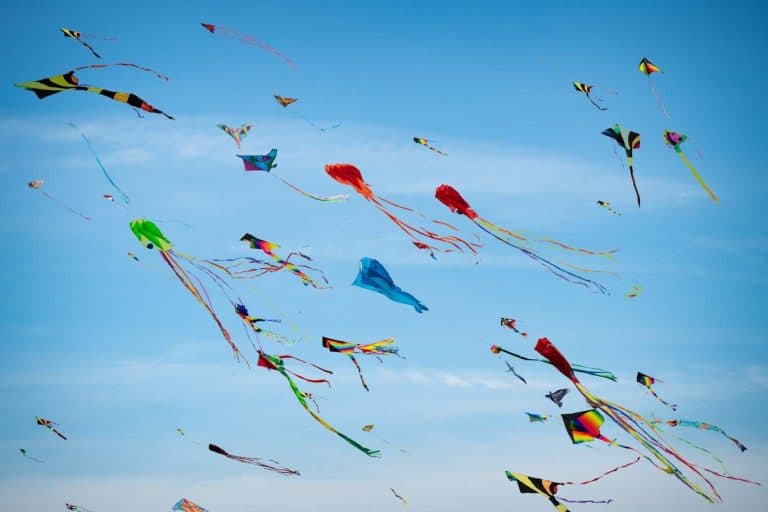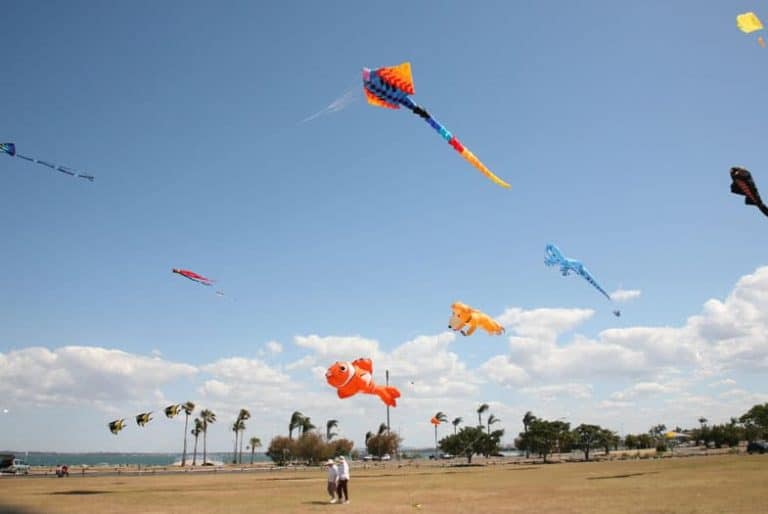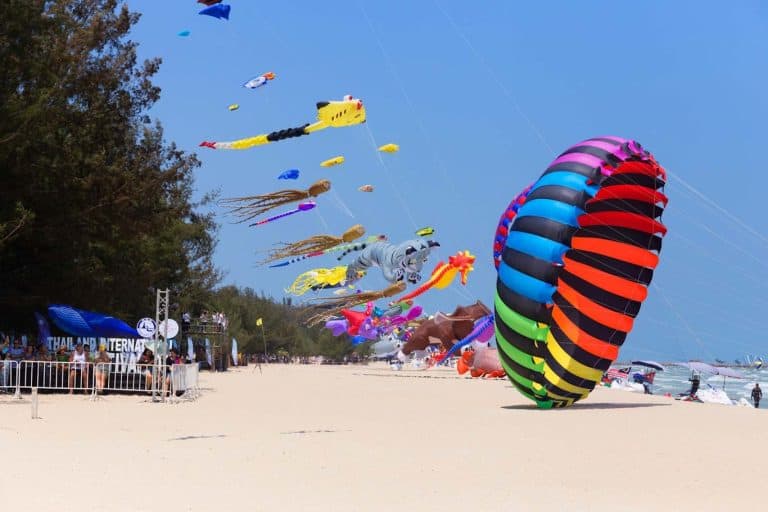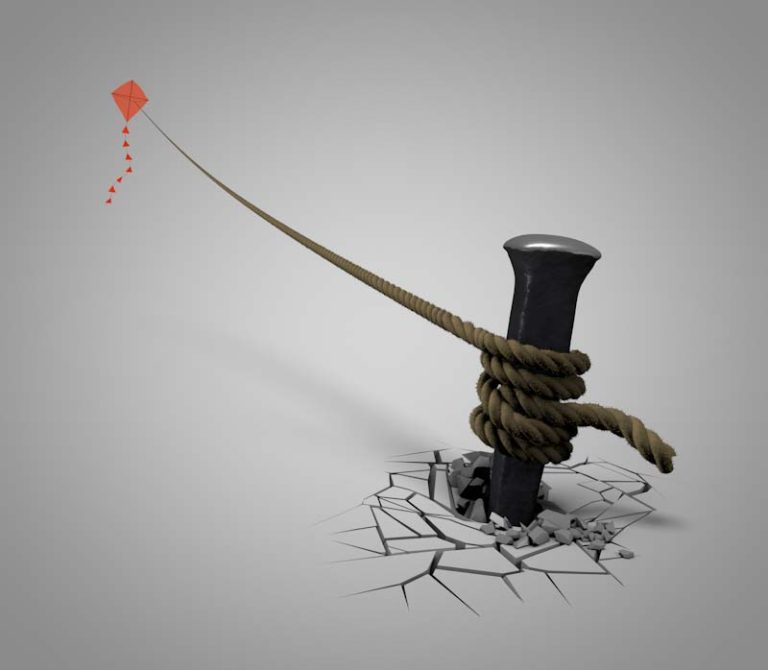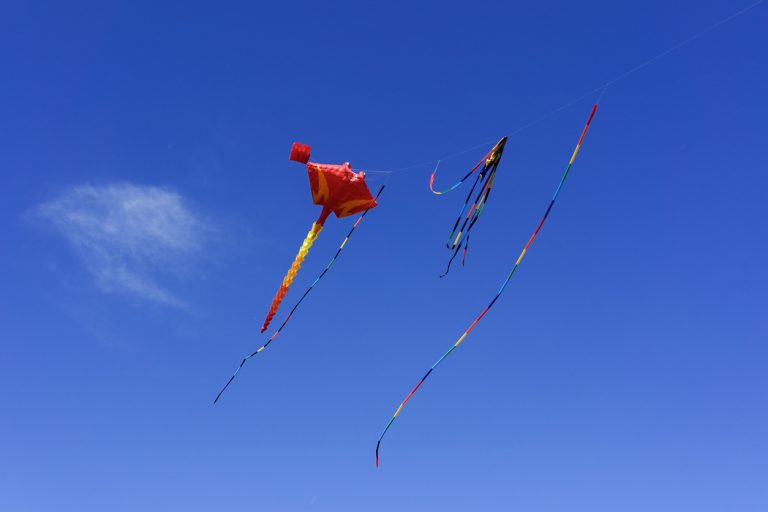Is Flying a Kite Push Or Pull? (Let’s Find Out)
Are you curious about how kites launch and how they stay flying while in the air? Just like other objects that fly, kites rely on four major forces. This article looks at these forces and determines whether kite flying is a push or pull process.
The wind pushes kites upwards through the force of lift. Kite strings keep the kite from flying away. Kite flying, therefore, involves both the process of pulling and pushing to be successful.
What Type Of Force Is Flying A Kite?
Flying kites are an excellent way for students and other individuals to feel aerodynamic forces. The ability of kites to fly is made possible by the powers that act on them. Kites used during kite flying come in various shapes and forms, but the forces that act on them remain the same. The powers that work on kites are the same as those on airliners. These same forces allowed the wright brothers to test their flying theories by flying their aircrafts the same way kites are flown (Source).
Kites are lighter and heavier crafts than wind, and their surfaces react against the wind. In turn, it creates forces of drag and lifts. As a unit, kites contain anchors, tethers, and wings. The wind current that flows over the wing’s surface creates the leverage, keeping the kite flying (Source).
The pressure above the kite’s surface should be lower than that below the kite’s surface to create a lift. Horizontal drag also occurs when the kite interacts with the kite. It happens whether the kite’s anchor point is moving or fixed.
Two factors cause aerodynamic force; the normal and the shear forces. The former is a result of pressure on a craft’s/body’s surface. On the other hand, shear force results from the viscosity of the gas or air. Both pressure act locally. One acts parallel to a surface while the other regularly applies to a surface (Source).
Aerodynamic force generates when airfoils (e.g., wings move relative to the wind. The power generated is backward, with relative motion determining its angle. Lift is perpendicular to relative motion, and drag is parallel to relative motion. Three aerodynamic forces act on a kite lift, pull, and thrust. The fourth force that acts on crafts such as kites is weight. This force, however, isn’t an aerodynamic force; it is a body force.
What Force Does the Kite Require?
The kite’s body consists of a sail (outer covering) and a framework. A wing surfaces once the sail covers the framework. Controlling the kite is made possible by the kite line. For the kite to fly, the wind is required.
If the wind is necessary for kites to fly, how are indoor kiting competitions held? The same idea that wind is necessary still applies even when indoors. The kite operators generate a current to flow over the kite with various motions.
Kite flyers create various motions that make kite flying feel like a dance. Thrust, lift, and drag is generated through arm movements, walking patterns, and spinning (Source).
Kite lines are essential to hold kites in place and prevent them from being blown away by the wind. Thrust is an integral part of the flight and is generated differently by various flying objects. It allows things to move forward. Wing flapping allows birds to move through the air. Air crafts utilize engines to enable them to push air to the back of the vehicle quickly and thus move forward (Source).
Planes utilize motors, and birds use muscle movement to generate thrust. Since kites cannot generate their thrust,
they rely on being held and the wind flowing over them for this to happen. It means that the force of thrust that acts on kites is dependent on the kite string containing the kite and the wind flowing around it. One way that the kite would fly in the absence of wind is if the operator started running. It would generate current and create airflow.
When wind flows over the surface of a kite, it gets held back by the roughness caused by the kite sail and the kite frame. It is what operators refer to as drag. All kites have pulling force, and some require extra pull to fly appropriately.
It is why some kites have tails while others do not. The trail offers the much-needed drag, and it has the kite pointing in the right direction. One longtail placed at the rear of the kite can cause a particular tug. When the tail is cut into small strips and placed in various kite parts, it will produce more drag. Several backends cause the kite to slow down some more.
Is Flying A Kite Push Or Pull?
Air crafts are machines capable of flying by gaining air support. They counter gravitational force by using a dynamic or static lift. In other cases, such as jet engines, they depend on downward thrust. Kites are also a type of aircraft (Source).
Over the years, kites have proved helpful for meteorology, human flight, and military applications. During wars, kites helped in observation, delivering ammunition, and signaling in the past. It lifts the observer above the battlefield (Source).
Four forces act on air crafts, including kites, that cause them to fly. These are gravity, lift, thrust, and drag (Source).
The pressure difference at the front and the back of the kite causes drag. The friction generated when it goes over the kite’s surface also contributes to this. Thrust is the opposite of pull. The thrust is a forward-acting force that pushes air backward at a fast rate, and in turn, objects such as kites move forward.
Birds depend on their wings for thrust, and airplanes rely on engines. Kites cannot produce thrust on their own. Therefore, they depend on kite strings to hold them in place. On the other hand, a lift is a force that pushes kites upwards into the air. It is the upwards acting force.
The force of gravity counters the force of lift. It is a downward acting force that pulls kites to the ground. Therefore, launching the kite means the strength of the boost should be higher than that of gravity. For stability, all the forces must stay balanced.
For planes to fly, gravity on the ground pull them down while the lift on the wings surfaces pushes them up. For kites, the wind pushes them to the sky. They, however, need the strings as it pulls them to the ground. Without the lines, they would fly away. It is, therefore, safe to say that kite flying involves a push and pull.
How Does a Kite Fly in The Air?
Kites depend on wind to fly in the air. You can feel the current push both you and the kite in windy conditions. If one is not careful, the wind might blow them away, especially if kite size was not considered beforehand (Source).
The best wind to get kites flying is in the range of 8-20mph. Lighter wind conditions can make launching the kite difficult. Stronger winds may cause the kites to crash before it soars in the sky. Kite strings also help in keeping the kite steady. However, there are a few specific lines that are suitable. Steel wires, for example, should be avoided as they can be hazardous when exposed to power lines or rainy conditions.
Summary
The force of the lift should be greater than the force of gravity to launch the kites. Part of why leverage is possible is because kite sails consist of lightweight material. Kite operators should therefore consider the kind of material they use for their kite sails and kite lines.

